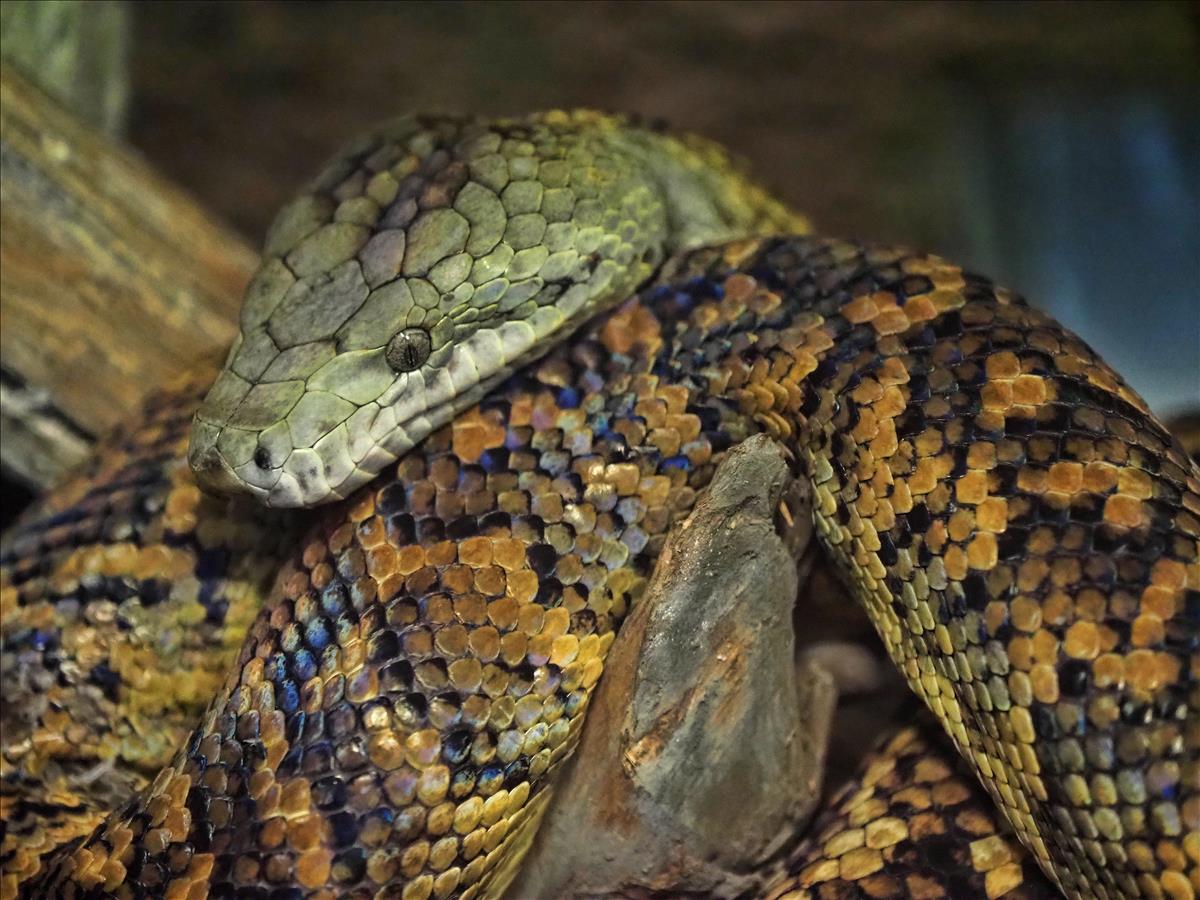Viewable


Reptile
Location at the Zoo
Americas
Global Range
Endemic to the island of Jamaica and Goat Island, off the southeast coast.
Jamaican boa
Chilabothrus subflavus (Stejneger, 1901) Epicrates subflavus Stejneger, 1901
Order: Squamata
Family: Boidae
Genus: Chilabothrus synonym Epicrates
Known as the Yellow snake, the Jamaican Boa is the largest terrestrial predator native to the island. These moderate sized constrictors can attain weights approaching 5 Kg and lengths from 1.5 to 2.3 m. Sexual dimorphism (difference between males and females) includes females generally being larger in body length and girth, whereas males generally have longer tails (containing the hemipenes) and longer cloacal spurs (vestigal hind legs).
The colour varies along the length of the snake. The head and anterior half of the body are yellowish green with irregular black cross bands. Towards the tail the colour becomes progressively darker until almost entirely black at the tail tip. The scales also produce an iridescent sheen when light is shown upon them.
The colour varies along the length of the snake. The head and anterior half of the body are yellowish green with irregular black cross bands. Towards the tail the colour becomes progressively darker until almost entirely black at the tail tip. The scales also produce an iridescent sheen when light is shown upon them.
Conservation Status: IUCN

Distribution
Found only in Jamaica. Only isolated pockets of suitable habitat remain leading to a fragmented distribution on the island.Habitat
Various undisturbed woodland habitats, including limestone karst forests.Diet
Prey items for adult Jamaican Boas include native bats and birds as well as introduced rodents such as rats. The young feed on small lizards and frogs until they are large enough to tackle the larger prey items of the adults.Adults employ an ambush strategy to secure prey. Hanging from trees limbs allows them to snatch prey, like bats or birds, from the air when they fly past. The prey is captured in flight and quickly wrapped up in constricting coils to dispatch it before it is swallowed whole.












